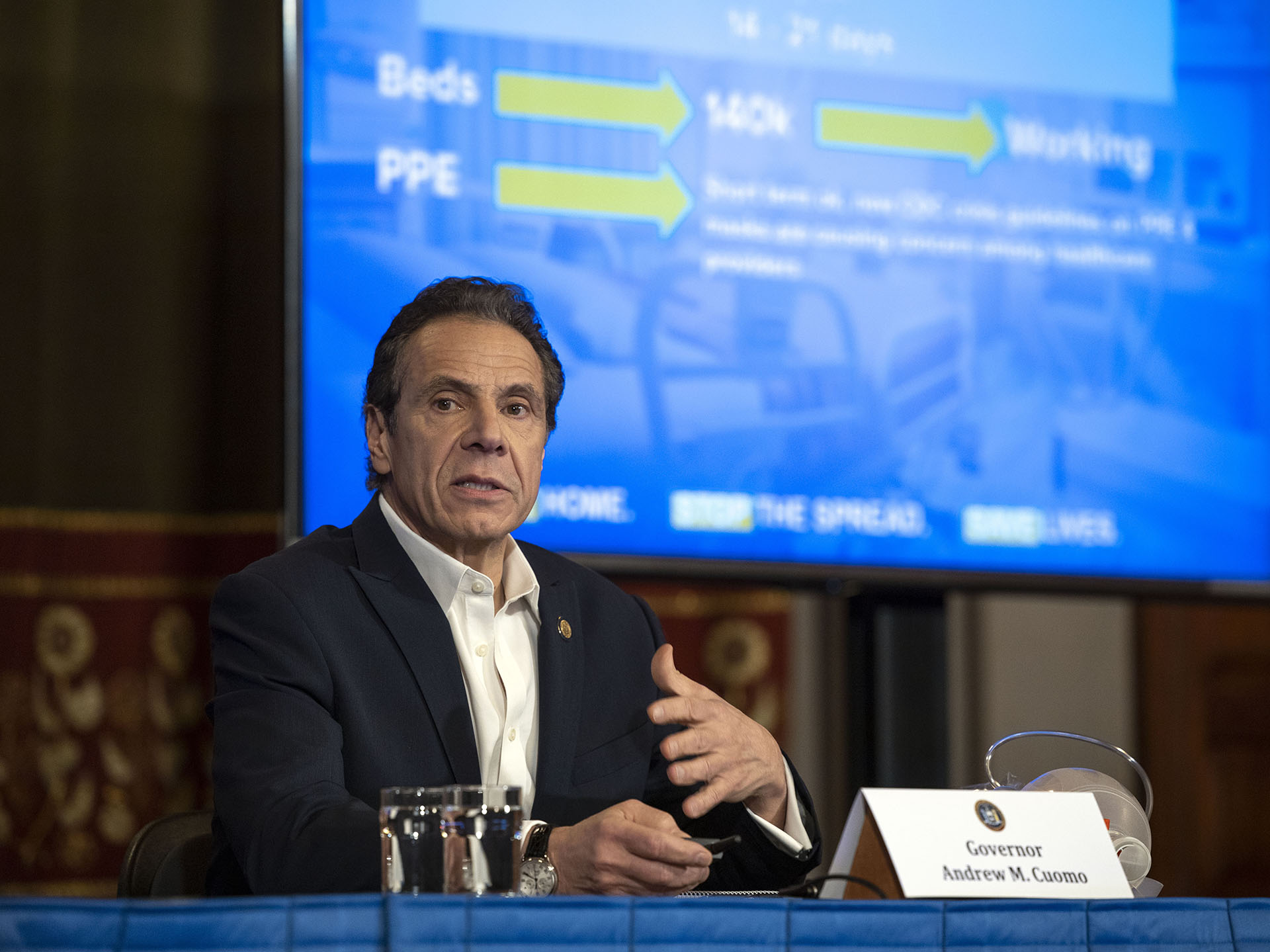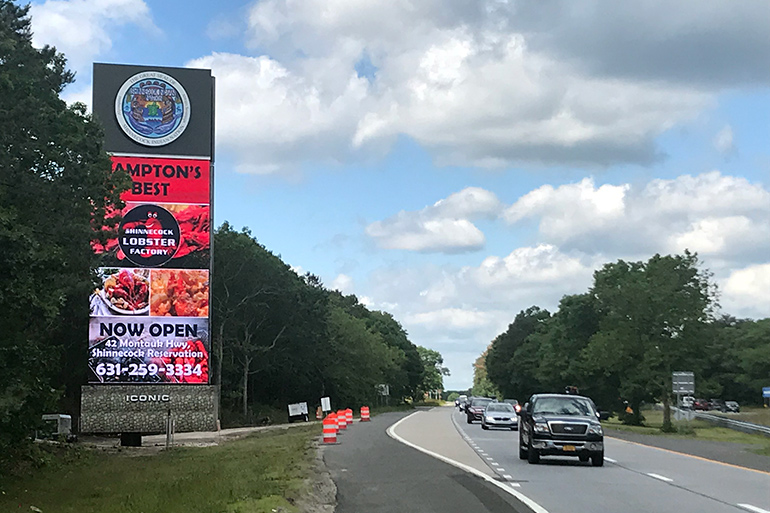Trump Approves $2.2 Trillion Stimulus Package


President Donald Trump enacted a $2.2 trillion stimulus bill Friday that will send $1200 checks to many Americans and hundreds of billions to small and large businesses.
The president’s signage into law swiftly followed the package’s March 27 passage through the House of Representatives in an attempt to impede the economic destruction of COVID-19. It will boost unemployment benefits; offer loans, grants, and tax breaks to small and big businesses; and send billions more to state and local governments. Senate lawmakers had voted 96-to-0 on the legislation.
“While this legislation is not perfect, the Coronavirus Aid, Relief, and Economic Security Act provides critically and urgently-needed funding for hospitals, state and local governments, and small businesses and workers,” Congressman Lee Zeldin said. “This bill also delivers $16 billion for personal protective equipment kits, ventilators, and other medical supplies for federal and state response efforts, especially our local responders as they confront this pandemic head-on.”
The vote came in a fast-paced series of events Friday afternoon, following four hours of debate, to aid those who have seen their cashflow dramatically interrupted by the country’s economic shutdown. State and local governments will receive $150 billion in supplemental funding to provide basic and emergency services during the crisis.
“Today, as we have all acknowledged, our nation faces an economic and health emergency of historic proportions,” House Speaker Nancy Pelosi said.
More than 150 million households will receive checks under the legislation, which will send $1200 to many individuals, plus an additional $500 per child for families. The maximum amount a family can receive is $3000. People with incomes above $99,000 are not eligible, and the total benefit is phased out for people earning between $75,000 and $99,000. There is no payment for someone who claims a person as a dependent, even if that person is an adult. Treasury Secretary Steven Mnuchin said he expects most people to get payments within three weeks.
“The workers are going to get $3000 for a family of four,” Trump told Sean Hannity March 26 in a Fox News interview. “They’re going to get all sorts of things that they, frankly, in many cases, wouldn’t have even gotten if they had the job, if they didn’t have to go through this hell. And it’s — it’s a wonderful thing.”
Health Care Help
The bill includes almost $400 billion to help small businesses retain payrolls, and $250 billion to boost unemployment insurance, offering $600 per week for four months for laid-off workers, on top of whatever benefits their states may provide. Small businesses receiving the loans cannot cut their employment levels by more than 10 percent until September 30. Hundreds of billions of dollars in emergency federal aid is set aside for large corporations that are suffering.
It also tosses a life preserver to the nation’s health care system — $150 billion, including $100 billion for grants to hospitals and health care providers buckling under the strain of novel coronavirus caseloads. An additional $45 billion will fund additional relief through the Federal Emergency Management Agency for local response efforts and community services.
“This agreement increases the Medicare reimbursement rate to assist providers caring for our most vulnerable population, robustly employs the strategic national stockpile, expedites [Food and Drug Administration] consideration of new medication and treatments, and facilitates the use of new and innovative telemedicine technology to protect and contain the spread of COVID-19,” Zeldin said.
The Department of Education is also suspending payments on student loans without penalty through September 30.
The Defense Department will get $1.2 billion for the United States National Guard’s coronavirus response. Over 10,000 National Guard members to date have been activated.
An additional $1 billion is available for Defense Purchases Act purchases.
The bill states that anyone facing a financial hardship from COVID-19 shall be given a forbearance on a federally-backed mortgage loan of up to 60 days, which can be extended for four periods of 30 days each. The legislation says that servicers of federally-backed mortgage loans may not begin the foreclosure process for 60 days from March 18. It also does not allow fees, penalties, or additional interest to be charged as a result of delayed payments. It includes similar protections for those with multifamily federal mortgage loans, allowing them to receive a 30-day forbearance and up to two 30-day extensions.
New York Attorney General Letitia James issued a warning March 28 that scams related to the stimulus package were circulating. She said in a statement her office received reports of people attempting to steal personal and financial information by using the news that the federal government will send payments to people across the country.
“The latest example involves scammers pretending to be from the federal government and preying on individuals who desperately need financial support right now,” James said.
The attorney general said the scammers may use emails, texts, or webpages that look like they are from the federal government to get what they’re looking for.
Postponing The Primary
Trump also extended the current federal social distancing guidelines to April 30, just a day after Governor Andrew Cuomo said his stay-at-home order, PAUSE, will be extended at least until April 15. This maintains statewide closure of nonessential businesses. The restrictions are all an effort to slow down the rapidly-growing number of COVID-19 cases.
“We’re doing it in two-week intervals, because every day is a new day, and we’ll see what happens day-to-day,” Cuomo said. “But I think it’s not even questionable today.”
Trump said at the White House Coronavirus Task Force briefing the peak number should be reached by Easter – April 12.
Sixty Suffolk County police recruits — after two weeks of accelerated training — began checking on nonessential businesses Monday to ensure they stay closed. They’re also walking the streets to enforce social distancing, Suffolk County Police Commissioner Geraldine Hart said Friday.
Local businesses can use Google’s My Business tool to communicate hours of operation, or let potential customers know a company is temporarily closed due to the national crisis and/or because of the PAUSE order. Posts can also be utilized to communicate special offers or inventory updates.
“As communities throughout the world respond to COVID-19, we know that this time presents unique challenges for businesses,” Google said. “We have tips and recommendations to help you navigate this for your employees and customers.”
Hundreds of thousands of 15-minute COVID-19 test kits were ready to be distributed in the United States on Monday, from Melville-based Henry Schein Inc. The South Korea-based SD Biosensor Inc.’s blood tests were cleared under emergency guidance by the Food and Drug Administration. Cuomo said researchers at a laboratory in Albany also developed a less-intrusive saliva and short-nasal swab test for the novel coronavirus.
On Saturday, he announced the New York presidential primary will be pushed back from April 28 to June 23 amid the ongoing coronavirus pandemic.
“I don’t think it’s wise to be bringing a lot of people to one location to vote, a lot of people touching one doorknob, a lot of people touching one pen,” Cuomo said.
Temporary Hospitals
Cuomo said Trump has backed off a suggestion that restrictions be enacted to prevent New Yorkers, as well as Connecticut and New Jersey residents, from traveling out of state. The Centers for Disease Control and Prevention issued a travel advisory for those states, and the governor of Florida is suggesting New Yorkers rethink plans of going south. The governor also addressed recent statements by Trump that questioned whether New York needs 30,000 additional ventilators, the number the governor had been requesting.
“We’re planning for that quote-unquote worst-case scenario, which the models predict,” Cuomo said. “Maybe we never get there — maybe we flatten the curve and we slow the infection rate so we never get to that point — and that’s what we’re trying to do and we’re working on that day and night.”
The USNS Comfort arrived in New York City on Monday, March 30. The third United States Navy ship to bear the name Comfort, and the second Mercy-class hospital ship to join the U.S. Navy’s fleet, will provide 1000 new beds and additional medical personnel.
Cuomo had asked for four more “temporary” hospitals be erected by the U.S. Army Corps of Engineers. He spoke from the Javits Center in Manhattan, already equipped to handle non-COVID-19 patients and relieve the burden on local hospitals, on Friday when saying the Federal Emergency Management Agency will look into building at the Brooklyn Cruise Terminal, the Aqueduct Racetrack facility in Queens, CUNY Staten Island, and the New York Expo Center in the Bronx.
“I want to have one in every borough. I want to have one for the Bronx, Queens, Manhattan, Staten Island, Brooklyn. One for Nassau, one for Suffolk, one for Westchester, so everybody knows downstate, which is where the essence of the density is right now, that everyone equally is being helped and is being protected,” Cuomo said. “The trend is clear, the trajectory is clear, and it is pointing us towards the surge that is coming at our health system.”
Cuomo said he is searching “all over the globe” to acquire more ventilators. The governor said previously he intends to put two patients on a single ventilator if needed. State experts think as many as 140,000 hospital beds will be needed if and when the apex is reached, Cuomo said.
The Jacob K. Javits Center 1000-bed temporary hospital was completed March 27, with work on the other three — at Stony Brook University, SUNY Westbury, and the Westchester County Center — ongoing.
“I am proud to be on this mission with all the brave men and women of the National Guard, healthcare workers, and first responders who are truly doing God’s work,” Cuomo said.
desiree@indyeastend.com



